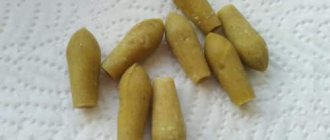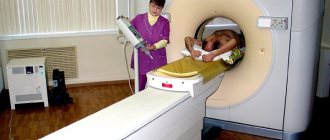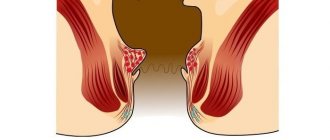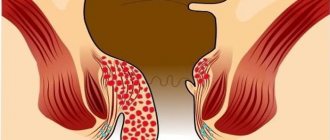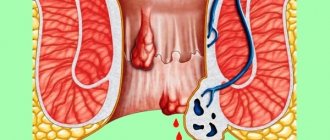Proctological diseases cannot always be cured with drug therapy; in case of complications, surgery is performed to remove hemorrhoids. In medicine, conservative treatment methods are practiced, but when the disease becomes chronic, the only option is surgery, and patients themselves insist on surgical removal, because a protracted recovery period is not required.
Indications for surgical treatment
Surgical treatment of hemorrhoids is used in extreme cases, there is a list of good reasons:
- in case of constant prolapse of the node due to weakening of the sphincter muscles;
- thrombosis, pinched nerve;
- increased symptoms, bleeding during bowel movements;
- internal cracks, there is a possibility of infection and the development of sepsis;
- internal hemorrhoids, accompanied by foreign growths.
The situation is aggravated by the presence of an external hemorrhoid; indications for surgery:
- swelling around the external hemorrhoid;
- severe pain shock, itching and burning;
- hemorrhoidal cones greatly increase in size, pain is experienced at the slightest contact;
- it hurts to be in a sitting position;
- cracks around the anus.
Postoperative period
Long-term rehabilitation will directly depend on the chosen method of surgical intervention and the level of complexity of the manipulation. After any type of surgery, the patient still remains in the hospital for some time.
For quick and trouble-free rehabilitation you must:
- during the rehabilitation period, give up alcohol, caffeine, and smoking;
- on the first day after surgery it is not recommended to eat food, only water;
- It is recommended to exclude any hot foods and drinks from consumption;
- it is necessary to adhere to the optimal drinking regime, it is recommended to drink at least 2-3 liters of water per day;
- carefully monitors personal hygiene;
- In parallel with treatment, it is recommended to use traditional methods;
- if pain occurs, you should consult a doctor rather than buy painkillers yourself;
- To speed up the regeneration process, it is recommended to use creams and ointments with wound-healing properties.
If you follow the recommendations of your attending physicians, the patient will be able to recover fairly quickly.
Who is it contraindicated for?
The operation is not always possible; for example, it is not performed in cases of immunodeficiency. Surgery to remove hemorrhoids is contraindicated in the following cases:
If there are signs of diabetes mellitus, surgery is not performed.
- the presence of an inflammatory process in the rectum;
- poor blood clotting, for example, if there are signs of diabetes;
- failure of one internal organ;
- removal is carried out only under local anesthesia for people with diseases of the cardiovascular system;
- oncological diseases.
If the only option is surgical removal, carefully prepare for the procedure, especially for older people, since tissue regeneration and the recovery process are slower.
How is the operation to remove hemorrhoids performed: a description of the techniques with video
Unpleasant and often very painful sensations haunt people suffering from hemorrhoids.
Sometimes it is impossible to do without surgical intervention, so it is important to know some of the features of this process in order to be able to prepare for the procedure as best as possible.
What does modern medicine offer?
The main types of surgical interventions actively used in modern medical practice are usually divided into several groups.
Main criteria - goals and techniques for their implementation:
- removal of hemorrhoidal veins with simultaneous ligation of their vascular pedicles:
- suturing part of the hemorrhoid with the mucous membrane (the intervention refers to plastic surgery);
- removal of hemorrhoids with laser;
- photocoagulation using infrared radiation;
- operations according to Milligan-Morgan and Longo.
Plastic surgery is a way not only to get rid of pain and discomfort, but also to significantly reduce the rehabilitation period, but the treatment itself will require more time, since it is necessary to come for consultations with doctors until complete recovery.
There are also several less common techniques that are used, for example, in case of complications of the disease and/or in advanced cases:
- According to Sklifosovsky , the procedure involves tying the base of the knot using a strong medical thread.
- According to Martynov , the method also suggests tying the node to prevent blood flow to the node, but excision is also performed.
- The Whitehead maneuver is used if a complication of the disease is observed or it occurs after measures taken to get rid of hemorrhoids. Its essence is as follows: an incision is made around the perimeter at the site of the problem, then the affected area of the colon is removed and cut off, after which the edges are carefully sewn to the incision.
Before prescribing an operation, the doctor will perform a full examination, it will be necessary to take tests, and only after this the type of intervention will be identified that will allow you to get rid of the disease.
Indications for surgical treatment
Operations and special manipulations related to the removal or cosmetic correction of hemorrhoids are prescribed in the following cases:
- deterioration of the condition – transition of the disease from a mild stage to a moderate and severe stage after a course of drug treatment for 2-3 months;
- constant inflammation of the nodes (after each bowel movement);
- the disease is accompanied not only by unpleasant sensations, but also by bleeding;
- thrombosis was detected in the area of hemorrhoids;
- the presence of other diseases or pathologies of the rectum;
- chronic paraproctitis was identified;
- there are polyps.
It is important to remember that surgery may be prescribed even if there is no improvement after manipulations such as ligation or sclerotherapy.
Hemorrhoidectomy - an old and painful method
This type of surgical intervention is used in the later stages of treatment of the disease or when obvious complications are observed.
Operation video:
In addition to a conventional scalpel, during the work the surgeon uses modern equipment, the basis of which is ultrasound.
This approach made it possible to significantly reduce the morbidity and time of the operation itself.
It is performed under general anesthesia or spinal anesthesia and takes about 60 minutes. The wounds left after the intervention heal quickly and do not cause discomfort.
Milligan-Morgan operation
This operation is performed to remove hemorrhoids, as shown in the video:
Milligan-Morgan hemorrhoidectomy is performed for both internal and external hemorrhoids.
The peculiarity of the procedure is that it can be performed at stages 3-4 of the disease, when an increase in the size of the nodes is observed.
The main essence of the operation is the removal of the node and suturing of the vascular pedicle. After disinfecting the area where the intervention will be performed, the specialist performs an inspection using special magnification tools.
Important: doctors try to preserve the skin and mucous membranes. The duration of the procedure is about 35-40 minutes.
The areas left after node removal may be sutured, but they are also left open to allow the healing process to occur naturally.
The final stage of this operation is packing, which lasts several days. Natural body processes, such as passing gas, are carried out using a special soft medical tube, which is inserted at the very end of the procedure.
Milligan-Morgan operation
In turn, there are a number of contraindications for the Milligan-Morgan operation:
- infectious process in the body;
- chronic diseases (their exacerbations);
- oncology;
- Crohn's disease;
- pregnancy and lactation.
In addition, patients who have been diagnosed with HIV are not allowed to undergo surgery. Childhood is not a direct contraindication, but the doctor must conduct a thorough examination of the entire body before giving permission for the procedure.
Longo intervention
Removal of hemorrhoids using the Longo method - video:
stopvarikoz.net>
How should the patient prepare at home?
Preparation for surgery to remove hemorrhoids begins a month in advance; with the right approach, the recovery process will be much easier. To avoid unpleasant consequences such as constipation after surgery, you should balance your diet and normalize your intestinal function. Eliminate all heavy and harmful foods that create additional stress on the body. Consume enveloping fermented milk products, dietary meats, as well as vegetables and fruits.
If an infectious disease lives in the body, its effect is reduced with medication. A visit to the dentist is an integral part of preparation before surgery. The proctologist should examine the anus for cracks, ulcers and growths. A few days before the scheduled date of surgery, cleanse the intestines with your last meal at least 12 hours before. Shower with antiseptic before surgery.
Possible complications
According to reviews, removal of hemorrhoids is rarely associated with any undesirable consequences. However, as a result of improper suturing of wounds or violations of asepsis rules after surgery, complications may arise:
- intra-abdominal bleeding. If there is bleeding after the operation, the rectum is examined using an anoscope to determine the cause and eliminate it;
- urinary retention;
- fecal or urinary incontinence;
- anal canal stenosis;
- formation of rectovaginal fistulas;
- infectious process, wound suppuration.
Complications most often occur after open hemorrhoidectomy, less often after the use of minimally invasive techniques. The most common ones include:
- suppuration of postoperative scars or wounds;
- the appearance of fistulas (the intestinal wall fuses with the skin or another hollow organ, for example, the vagina, and a channel is formed between them through which feces can be thrown into the organ);
- narrowing of the sphincter (if sutures are placed incorrectly, the anus narrows and problems with defecation appear);
- bleeding (appears when postoperative wounds are injured by dense feces);
- problems with urination (occurs more often in men on the first day after open hemorrhoidectomy, does not require specific treatment, and to alleviate the patient’s condition, urine is removed with a catheter);
- prolapse of part of the intestine (appears rarely, only when the nerve endings responsible for the functioning of the anus are damaged).
No matter how minimally invasive the intervention, complications can always arise, even after the most flawless surgical algorithm. However, problems in the early or late postoperative period still arise due to medical oversight.
The most common complications:
- Suppuration;
- Formation of a fistula or fistula;
- Pathological narrowing of the anal canal;
- Bleeding;
- Urinary retention;
- Rectal prolapse;
- Psychological discomfort, a feeling of fear directly related to worries about one’s delicate problem;
- Weakness of the anal sphincter.
Any of the problems that arise can be solved. It is necessary to understand that removal is only one of the stages of treatment. Rehabilitation takes about 3 - 4 weeks. During this time, the patient must not only recover, but also reconsider his lifestyle.
The person is told how to initially care for tissues whose areas have been removed, and what to do to prevent the re-formation of hemorrhoids. An active lifestyle, changing eating habits and paying attention to your health will help you avoid most problems.
Many patients are justifiably interested not only in the question of how the operation to remove hemorrhoids goes, but also what complications there may be after it. They can occur after any of the methods used to excise hemorrhoids:
- Severe pain that can haunt the patient for 3 weeks after the intervention. This is due to injury to the anus and vascular pedicles of the neoplasm.
- Infectious infections due to insufficient care of the wound surface.
- Postoperative bleeding.
- Fecal incontinence when performing extensive excision of nodes, as well as when incorrectly made incisions that damage the anal sphincter. This problem may disappear on its own some time after surgery.
- Difficulty urinating.
In addition, unfortunately, a relapse of the disease with new formation of hemorrhoids is possible.
Preparing for surgery in hospital
Surgical intervention involves many variations aimed at removing hemorrhoids. The task of the doctor who will operate is to choose the best option for the patient and should be prepared. To do this, the previous course of treatment, the development of the disease, its manifestations and localization are studied. To get a complete picture, you will need to take blood clotting and general tests, urine tests, indicators of hepatitis and HIV infection, as well as undergo an ultrasound, colonoscopy and a digital examination by a proctologist.
In most cases, hemorrhoid surgery is performed under general anesthesia; the patient must meet with the anesthesiologist and provide all the information about taking medications. And also talk about the individual characteristics of the body, in particular, allergic reactions. With this approach, staff will be better informed and negative consequences will be minimized.
Types of surgical intervention
Previously, there was only one operation to remove hemorrhoidal cones, but in modern times, due to the active development of medicine, today there are several such techniques. There are different types of such techniques, depending on the level of complexity.
There are these types of operations depending on the complexity of hemorrhoids:
- open (classical) - involves the removal of not only the hemorrhoids, damaged nearby tissues, while the edges of the wound are not sutured, they remain open and heal naturally;
- closed (Ferguson method) - involves not only the removal of painful formations, but also further suturing of tissue; such an operation is usually performed on an outpatient basis;
- submucosal (Parks method) - involves a complex operation in which nodes are removed without affecting or injuring the intestinal mucosa, and is much easier to tolerate than other manipulations.
Among the most common and effective techniques are hemorrhoidectomy and hemorrhoidopexy. The course of such an operation may vary, which will also depend on the type of hemorrhoids, its complexity, as well as the degree of neglect.
Hemorrhoidectomy
It is a classic method for removing hemorrhoids, developed back in the late 30s of the last century. The most famous representative of this method was Milligan-Morgan, which is why the method is often called by his name. Gimmoroidectomy allows you to relieve the patient from the immediate source of symptoms - nodes and damaged tissue. However, such an operation has serious disadvantages. First of all, it is characterized by pain, massive blood loss, and a protracted recovery period. In addition, the risk of complications after such an operation increases sharply.
Hemorrhoidopexy
It is a method developed in the 90s by proctologist Antonio Longo. Now this technique is the most popular, since it allows you to achieve excellent results without pain and serious consequences for the patient. The operation is performed by the doctor excising the area of the anal mucosa above the tricky formation, then tightening it and securing it with paper clips. As a result, the node's blood circulation is stopped, which leads to its drying out and reduction. This operation is completely painless, non-harmful, and is performed very quickly and with minimal local anesthesia. Therefore, it is indicated even for elderly patients, seriously ill patients with chronic diseases, as well as pregnant women. The recovery period after surgery is minimal.
Surgical methods
There are radical types of operations and minimally invasive ones. The first includes abdominal, when the entire intestine or a certain area is removed. This technique is radical, the rehabilitation process is long and painful, and the risk of infection also increases. The minimally invasive procedure involves excision of hemorrhoids with minimal trauma. The operation lasts from 15 to 30 minutes, after which the patient can return home to their previous life. The manipulations are aimed at removing hemorrhoids and their consequences; the choice of method is based on the severity of the disease and other factors. Popular types of interventions:
- sclerotherapy;
- infrared coagulation;
- overlap with a latex ring;
- hemorrhoidectomy;
- Longo operation;
- disarterization.
Milligan-Morgan hemorrhoidectomy technique
Removal of external and internal hemorrhoids according to Milligan-Morgan can be open or closed. Surgical treatment of hemorrhoids involves leaving wounds after the procedure without sutures or staples, this is necessary to prevent scarring in places of cracks. The patient is operated on in a hospital. Closed, no less effective, but sutures are placed at the excision site, then the patient can go home.
The purpose of the operation is to remove the formed nodes and solder the base of the blood vessels that supplied the formation. With an internal node, a section of the rectal mucosa is cut out. The undoubted advantage of the procedure is that the problem is solved at different levels.
Hemorrhoidectomy using the Longo method
External hemorrhoid removal using the Longo method combines medical knowledge with highly sensitive technology. The surgical intervention is performed under general anesthesia, all efforts are aimed at eliminating the causative agent of the disease. First, a nearby area of mucous membrane around the hemorrhoid is cut out and the blood channels are sutured; after completion of the procedure, the wound is sutured with titanium threads. The best technique is prepared for the operation:
- expanding anal clamp;
- stapler with titanium staples;
- threader.
The advantage of the method is that the operation is painless, since the nerve endings are not affected and, as a result, there will be no discomfort, impaired potency in men, or voluntary bowel movements. The operated patient, after 15-20 minutes of surgery, can return to his previous life, and the residual effects will last no more than a week. The operation is the best of its kind, as it does not cause complications and the prognosis for a positive outcome is as high as possible.
Laser therapy
At stages 1 and 2 of the disease, treatment is carried out conservatively; if all attempts were ineffective, then minimally invasive techniques come to the rescue. Laser treatment is effective for removing external and deep hemorrhoids. The external node is cut out with a directed stream of rays, and the internal cavity of the rectum is cauterized. The doctor controls the depth of penetration and temperature of the radiation, thereby allowing him to cut out even the most difficult to reach areas. Laser coagulation better helps patients with heavy bleeding, inflamed fissures and even ulcers. The advantage of the laser is its versatility; hemorrhoids of different types and sizes can be easily cleaned using this method.
Laser manipulation does not injure tissues and organs, therefore it is painless, but its disadvantage is its high cost.
Transanal resection using the Longo method
Indications
Transanal resection using the Longo method can be prescribed for the same indications as classical hemorrhoidectomy. However, it is most often used to treat patients at stage III of the disease. Also, this technique cannot be used to remove external hemorrhoids.
Preparing for surgery
To prepare for surgery using the Longo technique, the patient must undergo the same procedures as before hemorrhoidectomy.
Anesthesia
To relieve pain during transanal resection using the Longo method, general anesthesia or local anesthesia is used. If necessary, the anesthesiologist can decide on the advisability of performing epidural anesthesia.
How is the operation performed?
The stages of transanal resection are as follows:
- After anesthesia, clamps are applied to the skin. Then they are pulled apart.
- A dilator is inserted into the anus, which is fixed at four points using sutures. The free ends of the threads are tied with a knot.
- An anoscope with a special obturator is inserted into the anus.
- A purse-string suture is placed above the dentate line of the mucosa (4-5 cm). To obtain a symmetrical seam, while applying stitches, the anoscope is turned and pulled out, and then inserted again. The ends of the threads used for the seam are not tightened.
- After this, the quality of the stitches and their density are checked.
- A hemorrhoidal circular stapler is inserted into the rectal lumen. Its head should be located above the applied seam, and the stapler itself should be held in the maximum open position.
- After performing these steps, the doctor tightens the ends of the threads that were used to apply the purse-string suture into one knot. The ends of the threads are brought out through the side holes of the stapler and held.
- The stapler is moved inward and, turning its handle clockwise, wait for it to close, during which part of the mucous membrane is crossed with a circular knife along with hemorrhoids. In this case, the ends of the resulting surgical wound are fastened with titanium clips.
- The surgeon removes the stapler and examines the removed part of the mucosa to assess the correctness of the procedure.
- After this, the quality of the application of staples is inspected and, if bleeding is present, additional stitches are performed using self-absorbable thread.
- The surgeon removes the anoscope and inserts a gas outlet tube and a gauze swab with Levomikol or Levosan ointment into the intestinal lumen.
As a rule, transanal resection using the Longo method requires no more than 15-20 minutes.
Features of the postoperative period
After completion of the operation, the patient is taken to the ward and provided with care that is indicated for patients after intravenous anesthesia. In the future, the patient is shown the same therapeutic measures as for hemorrhectomy. According to statistics, 83% of patients in the first days after transanal resection using the Longo method do not experience pain, and by the fifth day – already in 97%. If we compare this technique with hemorrhoidectomy, then almost 100% of patients have no pain for quite a long time.
In the absence of complications, the patient can be discharged from the hospital after 2-3 days, and his disability continues for 3-4 weeks. After discharge, the patient is recommended to regularly visit the proctologist until the mucous membrane is completely healed.
Possible complications
This operation to remove hemorrhoids has virtually no complications. In rare cases, the following are observed:
- bleeding: occurs when the edges of the mucous membrane diverge or do not stop sufficiently during surgery;
- rectovaginal fistula: develops with secondary infection in the area of the stapled edges of the mucosa and tissue necrosis, which is accompanied by the formation of a passage from the rectum to the vagina;
- rectoperitoneal sepsis: develops when a postoperative wound becomes infected and is accompanied by the spread of infection to the peritoneal tissue and into the blood;
- thrombosis of the inferior vena cava: caused by a blood clot entering the inferior vena cava and leading to the need to remove the kidney.
If we compare these two surgical techniques, then it is preferable for the patient to undergo transanal resection using the Longo method. Despite its higher cost, it poses a lower risk of complications and does not require long-term use of analgesics and long-term rehabilitation.
Possible consequences
Surgery to remove hemorrhoids is a necessary therapeutic measure, but there is a risk of complications. In the absence of proper hygiene and preventive measures, the inflamed mucous membrane will come into contact with pathogenic microorganisms (feces) and cause the following complications:
Sometimes women develop a fistula in the vagina after the intervention.
- The hemorrhoid wound festers; this type of complication occurs most often. After examination, the proctologist prescribes antibacterial therapy.
- The formation of a hemorrhoidal fistula is a dangerous complication that occurs after surgery. It forms in the intestinal cavity and is excreted on the surface of the dermis; in women it appears in the vagina. Education must be operated on as soon as possible.
- It is possible that the traversable canal may be reduced; this occurs due to a medical error when the sutures are fixed incorrectly. To restore, manipulation is carried out using special medical instruments.
- Removal of hemorrhoids is accompanied by prolonged bleeding, this is due to poor soldering of blood vessels.
- Modern surgery moves forward, but sometimes there are complications caused by an error by the operating doctor. In such cases, rectal prolapse may occur due to lack of sphincter tone. During the intervention, the nerve canals are damaged, which led to complete or partial loss of sensitivity, and will have to be treated with a repeat operation.
Surgery to remove hemorrhoids
Faced with a problem such as hemorrhoids, almost every person tries to cope with the disease without surgical intervention. The word “operation” is very scary; many have outdated views that it must necessarily hurt. Therefore, ointments, suppositories, and traditional medicine recipes are used. But this approach to solving the problem is effective in the initial stages of the disease. But what if a person re-read forums, scientific articles, did everything that the doctor advised, but there was no improvement? In such a situation, surgery to remove hemorrhoids is inevitable.
But let's take a closer look at the cases in which hemorrhoid removal surgery is recommended. Often, surgery is performed at stages 3-4 of the disease. It is important to take into account the age of the patient. Young people are prescribed minimally invasive procedures before surgery, and if they are ineffective, surgical intervention. Surgical treatment methods are more often recommended for middle-aged people. Before the operation, the patient undergoes an examination. After using invasive methods, there is a chance that surgery to remove hemorrhoids will not be required. With older people, preventive methods, such as diet, hygiene, gymnastics, traditional medicine, will help eliminate constipation and reduce bleeding, and there will be no need for surgery. Removing hemorrhoids is an operation that requires you to think about all the pros and cons. There are many methods when removal is not painful at all.
Indications for surgical removal of hemorrhoids:
- prolapse of inflamed hemorrhoids;
- bleeding (loss of blood is dangerous for the development of anemia);
- increased likelihood of thrombosis and pinched nodes;
- severe pain.
Surgery for hemorrhoids is not prescribed if there is an inflammatory process in the rectum or anus. After the inflammation and swelling are eliminated, the specialist decides on the need for surgery.
After deciding on the need for surgery, we will consider how to prepare and what to do in the preoperative period.
Preparations before surgery include the following:
- undergo an examination with all tests prescribed by the doctor;
- identification of concomitant diseases;
- diagnosis of contraindications;
- eliminate, in the presence of inflammation, swelling in the anal area;
- a few days before the operation and immediately the day before it, cleanse the intestines with laxatives and do enemas.
To avoid complications, it is important to adhere to all points, otherwise there is no point in performing the operation. After the preparatory period has been completed, the patient has completed all the preparation instructions, the doctor chooses the appropriate method for removing hemorrhoids, based on the stage of the disease.
Hemorrhoid removal methods
It is difficult to say how many types of surgical interventions there are. Let's consider the main ones - minimally invasive (removal of hemorrhoids without surgery) and surgical methods.
Minimally invasive (non-surgical removal of hemorrhoids) methods are characterized by the elimination of hemorrhoids by making punctures in the internal tissues and performing through them all the necessary actions to eliminate the problem. This method does not require hospitalization of the patient and is carried out without the use of general anesthesia, but does not eliminate the main causes of excessive blood flow to the nodes.
- Sclerotherapy - surgery to remove hemorrhoids is used for stages 1-3 of hemorrhoids and as a way to stop bleeding of nodes. The idea is to inject sclerosing drugs into the nodes with a special syringe using an anoscope. After this method, the node shrinks and the bleeding stops. How long it will take depends on the individual characteristics of the body to recover.
- Infrared coagulation is carried out using a photocoagulator. Used to stop bleeding.
- Ligation of nodes with latex rings is carried out using a special tool - a ligator; special latex rings are put on the internal nodes. How long does it take for the knot with the latex ring to be rejected - about two weeks after surgery.
- Cryotherapy is most often performed under local anesthesia. Its essence is to freeze hemorrhoids, using a low temperature coolant, often liquid nitrogen. How long this operation lasts is only three to four minutes. When thawing occurs, the tissue of the node is destroyed and it dies on its own.
Surgical methods for removing hemorrhoids
Surgery to remove hemorrhoids using the Milligan-Morgan method (classical). An outdated method of removing hemorrhoids. This method should be used if the patient has large nodes and massive bleeding is possible. Venous lumps are removed completely from the affected mucosa. This eliminates the cause of the disease, but the disadvantages are significant:
- The duration of the operation is about 30 minutes;
- complications after surgery;
- pain in the postoperative period;
- stay in hospital for about a week;
- difficult rehabilitation period.
Hemorrhoid removal surgery using the Longo method. When the nodes are pulled upward, the blood flow to the veins decreases. Due to this, the nodes are reduced in size. How long will it take for the rehabilitation period, in the absence of external hemorrhoids - lasts from 3 to 4 days.
Among the advantages of this operation are:
- rapidity. The duration of one procedure is from 15 to 20 minutes;
- no wounds after surgery;
- quick return to normal life and work.
The disadvantages of the operation are as follows:
- not performed for external hemorrhoids;
- high price.
Laser removal of hemorrhoids is not painful, it is the latest technique, eliminating the disease. Relieves bleeding and rectal prolapse with virtually no pain. Immediately after the operation, the person can walk, which cannot be done with other methods.
Consequences and complications in the postoperative period
The most common complications you can encounter are:
- The patient complains of pain due to severe pain syndrome. Severe pain in the postoperative period occurs due to the presence of a large number of nerve endings in the walls of the rectum;
- problems with urination.
- stool retention due to fear of pain during defecation. The patient thinks that it will be painful for him to go to the toilet and endures until the last, which leads to constipation;
- bleeding;
- fistula;
- suppuration.
Contact a specialist if:
- temperature over 37.5 degrees Celsius;
- intense pain in the anus, especially when the temperature is high;
- profuse bleeding.
After surgery to remove hemorrhoids, recovery is different for each person. Below are several recommendations that will make the recovery process easier and reduce unpleasant consequences.
- Balanced diet. The first day after surgery to remove hemorrhoids, it is better to limit your food intake. In the following days, the menu should include vegetables, foods rich in fiber, and drinking plenty of fluids. Avoid foods that cause bloating.
- Do light gymnastics, move more, but do not overexert yourself physically.
- Maintain hygiene.
- In the postoperative period, you can make lotions from herbal decoctions, then wound healing occurs faster, and rectal suppositories will help stop the bleeding.
There is no need to be afraid of surgery, medicine is developing, new ways are emerging to get rid of this insidious disease forever and at the same time not hurt.
OGemorroe.ru>
Recovery period and prognosis
There are effective ways to remove hemorrhoids and cones; the rehabilitation period depends on this. The age of the patient and his attitude towards his own body also influences. For treatment of external hemorrhoids to help, follow all the doctor’s recommendations and do not ignore scheduled visits to a medical facility. A strict diet, in the first weeks it is better to limit yourself to broths and soups, this will prevent the formation of constipation. External hemorrhoids are treated several times a day; the best remedy is an antiseptic with a healing effect. At first, the hemorrhoid bothers you with sudden movements and close contact with clothing. With proper care, the prognosis will be favorable. Regarding hemorrhoids, doctors do not give a definite answer as to whether it can recur after surgery and with what probability, but a definitely correct lifestyle will reduce the risk significantly.
Surgery to remove hemorrhoids: description, pros and cons
Hemorrhoids, in which there is a constant prolapse of nodes from the lumen of the rectum, can significantly complicate the patient’s life and cause undesirable consequences. Therefore it must be deleted.
Removing hemorrhoids is a procedure that can be performed using different methods. The most common today are minimally invasive operations, which have proven themselves in the treatment of hemorrhoids. They are well tolerated by patients, do not require lengthy preparation, minimize postoperative risks and have a short rehabilitation period; however, they are applicable only in cases where hemorrhoids are not yet in an advanced stage.
If hemorrhoids are at an advanced stage, surgery is recommended.
Minimally invasive methods
Minimally invasive methods are often popularly called “gentle removal.” During such operations, no incisions are made on the body.
Minimally invasive methods do not require general anesthesia and are usually performed on an outpatient basis, which means that the patient can go home immediately after treatment.
They have a short rehabilitation period, are well tolerated by patients and minimize postoperative risks. Today, the following gentle operations are most often used:
- Laser coagulation. Treatment of hemorrhoids is carried out using an ultra-fine beam of laser radiation. When it is applied to a node, it shrinks and then completely disappears, leaving a small scar in its place. External nodes are simply cut off during the procedure. Removing hemorrhoids using laser coagulation takes very little time and very rarely leads to complications. Suitable for the treatment of hemorrhoidal disease stages 2, 3 and to prevent the progression of the disease at stage 1.
- Ligation with latex rings. During this procedure, a special latex ligator is placed on the leg of the node, which compresses the leg and prevents the flow of blood. The bleeding node simply dies after some time.
- Desarterization. During it, special equipment is inserted into the rectum, then with its help a piece of the artery that feeds the hemorrhoid is cut and ligated. This operation lasts about 20 minutes, it is bloodless and painless, and does not leave postoperative scars.
- Sclerosis. The essence of the operation is the introduction of sclerosing drugs into the nodes. This is done using syringes. Under the influence of sclerosants, the size of hemorrhoids decreases and bleeding from them stops. The procedure is indicated in the presence of bleeding in hemorrhoids of stages 1-3, and is used in preparation for operations for diseases with stage 4.
- Infrared coagulation. In this case, the nodes are exposed to infrared radiation. Under its influence, the tissues heat up and coagulate; a crust forms at the site of exposure, which eventually comes out on its own during bowel movements. The duration of the operation is only a few minutes, it is usually used in the presence of very small nodes, with hemorrhoids of stages 1 and 2, and the technique can also be used to stop bleeding.
- Cryodestruction. The procedure involves exposing the nodes to low temperatures, which leads to their destruction. A few weeks later, the tissue dries out and then falls off. Liquid nitrogen is delivered to the surgical field with a special instrument. The operation is suitable for removing external and internal nodes of stages 1-3.
Unfortunately, physical removal of nodes is not a complete guarantee of a cure for hemorrhoids, since internal varicose veins and weakness of the vascular walls cannot be eliminated in this way.
The above methods are advisable to use when the disease is in its initial stages. Contraindications to most of them are paraproctitis, node thrombosis, acute hemorrhoids, and anal fissures.
Radical operations
In some cases, minimally invasive techniques alone are not enough, and then radical surgery has to be resorted to to remove hemorrhoids. These are quite serious interventions that have certain risks and a longer recovery period. There are different surgical methods for treating hemorrhoids. The main ones include:
- Hemorrhoidectomy. Another name for this surgical intervention is the Milligan-Morgan operation. This is one of the oldest and rather traumatic methods of removing hemorrhoids. During this operation, nodes and areas of the affected mucosa are completely removed. After it, the patient remains incapacitated for several weeks, and he is forced to carefully and regularly treat the postoperative wound. Hemorrhoidectomy takes a lot of time, requires general anesthesia, leads to massive blood loss, and rehabilitation after it is long and difficult. Its main advantage is getting rid of the cause of hemorrhoids - nodes, so relapses after it are extremely rare.
- Hemorrhoidopexy. Another name for the procedure is Longo operation. During it, a section of the intestinal mucosa is excised in a circle, above the hemorrhoids, after which the edges of the resected areas are sutured. As a result of such manipulations, the intestinal wall is stretched, the nodes are pressed against it, due to which the blood circulation in them is disrupted. Gradually, the nodes are replaced by connective tissue. The operation is performed above the dentate line of the rectum, where there are no pain receptors, so after it most patients do not experience pain. The recovery period after the procedure is quite short, and it rarely leads to complications. This method is used for internal hemorrhoids of stages 2-3.
- Thrombectomy. The operation is used to remove a blood clot from a blocked vessel, thereby restoring normal blood flow in the affected veins or arteries. It is recommended as a component of complex treatment of external hemorrhoids. Thrombectomy itself does not eliminate the disease, but only normalizes blood flow, thereby improving the patient’s condition.
Contraindications to radical operations include cardiovascular pathologies, diabetes mellitus, the presence of malignant tumors, immunodeficiency states, ulcers and acute inflammation in the intestines.
Possible complications
Unfortunately, the likelihood of complications after surgery is quite high. This is due both to the traumatic nature of the manipulations themselves and to the location of the surgical field, in the area of which there is a large amount of bacterial content. The most common complications include:
- suppuration;
- fistula;
- bleeding from the anus;
- narrowing of the anal canal;
- urinary retention;
- rectal prolapse;
- severe psychological condition.
To avoid complications that can result from surgical removal of hemorrhoids, or to minimize the risks of their occurrence, you should follow all the doctor’s recommendations and conduct the postoperative period correctly.
gemors.ru>
Rehabilitation
The recovery period after surgery to remove hemorrhoids consists of an early postoperative period and late rehabilitation. The early postoperative period lasts after completion of the operation and until the sutures are removed and includes several activities:
- insertion of a sterile napkin into the rectum for its tamponade, prevention of swelling and bleeding in the first few days after surgery;
- insertion of a sterile gas tube;
- daily dressings using antiseptic solutions to prevent infection of the postoperative wound;
- pain control using painkillers on the first day after surgery;
- diet with the exclusion of solid foods.
Late rehabilitation lasts from the moment of removal of postoperative sutures (7-10 days after surgery) to several months. During this period, it is important to follow general and dietary recommendations for better tissue restoration and functional activity of the rectum:
- refusal of fried, fatty, spicy foods and spices;
- preference is given to plant foods with sufficient amounts of vitamins;
- giving up alcohol and smoking;
- limiting physical activity;
- sufficient 8-hour sleep, organization of work and rest schedule.
Provided that the operation is carried out correctly technically in accordance with the indications, all measures are taken during preparation for surgery and rehabilitation after it, surgical treatment of hemorrhoids is effective with a minimum number of complications and the development of subsequent relapse.
Recommendations for recovery after surgery
For most people, the words surgery, hemorrhoids, and postoperative period evoke fears associated with a lack of understanding of how one can return to a normal lifestyle after undergoing surgery. Proper and high-quality rehabilitation after hemorrhoid surgery is the key to obtaining the maximum positive effect from manipulation, preventing unwanted complications and consequences, as well as guaranteeing the complete elimination of hemorrhoidal disease.
How long it takes for hemorrhoids to heal after surgery worries all patients, because they need to return to normal life faster! As a rule, recovery after hemorrhoid surgery takes about 25–30 days, of which the patient spends the first week in the hospital. During this entire period, experts recommend following some recommendations:
- on the first day after surgery, refuse to eat, limiting yourself to only 1–2 liters of clean drinking water;
- During the rehabilitation period, give preference to foods with liquid and semi-liquid consistency (porridge, purees, soups). This will ensure the formation of soft feces in the intestines that will not injure unhealed tissue in the large intestine;
- maintain a drinking regime, which is the key to metabolic processes in the body and facilitates the formation of feces and emptying (people with a body weight of less than 70 kg need to drink at least 1.5–2 liters of clean drinking water per day, with a body weight above 70 kg - 2–2.5 l);
- Recovery and treatment after hemorrhoid surgery should be carried out using painkillers in the form of rectal suppositories, tablets or injections. It is not recommended to endure the pain that accompanies the initial stage of rehabilitation;
- use wound-healing ointments and agents that promote the activation of regeneration processes, accelerate tissue restoration, and reduce the severity of scars;
- take laxatives for regular and easier bowel movements;
- during the rehabilitation period, avoid heavy strength loads, as well as physical exercises that load the legs and lower part of the torso and back, the pelvic area, and abdominal muscles;
- apply traditional medicine recipes: baths after hemorrhoid surgery and lotions based on decoctions of medicinal plants (chamomile, oak bark, string). Baths after surgery to remove hemorrhoids are one of the most effective ways to disinfect, reduce inflammation, pain, and accelerate tissue healing. use sitz baths after hemorrhoid removal 7–14 days after the procedure.
People who are about to undergo surgery also often have questions about when they can sit after surgery to remove hemorrhoids . no clear answer to the question of when you can sit after hemorrhoid surgery . It all depends on the type of surgical intervention with which the problem was solved. With minimally invasive techniques, you can sit immediately after the manipulation, while radical methods require 10–14 days of bed rest, after which the patient can begin to try to sit down, gradually increasing the time spent in a sitting position.
Also, many people ask the doctor: when can you have sex after hemorrhoid removal? Regarding the possibility of having sexual intercourse after surgery to remove hemorrhoids, some experts talk about its benefits during the recovery period, while others recommend abstaining from sex for 1-3 weeks. Oral and vaginal sex after hemorrhoid surgery is allowed 5–7 days after surgery. Whereas anal sex after hemorrhoid surgery is prohibited until the patient has fully recovered.
You can return to the previous level of acceptable physical activity only 2–3 months after surgery. After removal of hemorrhoids , gymnastics, warm-up, yoga, physical therapy or Kegel exercises are acceptable Moderate physical exercise helps normalize blood and lymph flow in the perianal area, prevents the occurrence of edema, the formation of blood stagnation and thrombus formation, and strengthens muscles and blood vessels.
Some time after rehabilitation, there is a possibility that hemorrhoids will reoccur after surgery, which must be treated using medications, traditional medicine recipes and physiotherapy. Postoperative hemorrhoids occur extremely rarely in a mild form, manifested by minor and mild symptoms. As a rule, postoperative treatment of hemorrhoids is highly effective and does not take much time.
How the procedure works
Laser coagulation takes place on an outpatient basis. The operation must be performed by a doctor with experience. Actions are carried out on a couch or chair. The patient is placed horizontally, legs spread apart. Then the doctor performs the operation.
Cauterization stages:
- To ensure that the procedure does not cause pain, local anesthesia is given.
- The external node is removed immediately, without blood. All formations of the affected area are gradually burned out.
- An anoscope is used for internal operations. Incisions are made on the inside of the hemorrhoids and cauterization is performed.
- When the lesion is found, the surgeon, using a coagulant, activates the laser beam and passes it through the hemorrhoids.
- Cones of small diameter are cauterized at the base, extensive lesions are burned out.
- The patient remains at rest for 40 minutes after surgery, then gets up. No dressing needed. The patient goes home.
The effect of laser on hemorrhoids
During the session, the surgeon removes 3 large nodes. Re-cauterize after 2 weeks.
Recovery time
Modern methods help remove hemorrhoids without complications. The recovery period takes time. Complications are rare.
The pain is felt in the first days, in the toilet. It is acceptable to take painkillers. Pain does not indicate infection or complications. The discomfort will continue for a week.
In the postoperative period, you need to adhere to a diet to avoid constipation. You can eat fermented milk products, fresh vegetables, and fruits. Anal hygiene will help to avoid complications. If the pain does not go away after 2 weeks, contact your surgeon for advice.
Complications after laser coagulation
No complications were recorded after laser surgery. If mistakes are made during the operation, the injured wound may bleed and become painful. Sometimes blood appears when going to the toilet, because... the stool is hard. Therapy with laxatives is indicated so that the areas are not injured during healing.
With improper hygiene, there is a risk of suppuration of the operation site. It is required to comply with the doctor's instructions and follow the wound care recommendations.
Prevent unwanted consequences by choosing a clinic with a good reputation and experienced doctors. A visit to the proctologist after the operation is recommended once a year.
How much does the operation cost?
There are different financial limits for hemorrhoid removal surgery. As a rule, the price in this case will depend on the type of operation chosen. In general, removal of nodes using the classical method of hemorrhoidectomy will cost patients from 3 to 100 thousand rubles, depending on the chosen city and clinic. It is worth noting that the cost of the operation does not include consultation with a specialist and outpatient care during the postoperative period.
The cost of the same operation can vary greatly in different clinics; in some hospitals it offers the cost for the entire list of services, operating rooms, preparatory and recovery services, so it is better to find out about the price in different cities.
Also, a separate price should be calculated for the preliminary preparatory stage before the operation, namely the examination, testing and the purchase of preparatory medications. Separately, you can order the service of preliminary preoperative therapy, which will prepare the patient for the procedure and reduce the risk of complications.
Varieties of surgical intervention techniques for hemorrhoidal disease
All types of surgical interventions to remove hemorrhoidal disease are conventionally divided into:
- Gentle or minimally invasive methods. Their essence lies in carrying out manipulations that do not involve the use of general anesthesia, as well as incisions and removal of tissue sections. These methods are less painful and atraumatic, do not lead to complications and have virtually no contraindications. Such procedures are performed under local anesthesia, and after the operation, after removing the hemorrhoids, the patient immediately goes home. Recovery after removal of hemorrhoids using these methods takes quite a bit of time and, as a rule, does not require a special regimen.
- Radical methods. They are based on the excision of sections of tissue, mucous membranes and veins in the large intestine through surgery under general anesthesia. These methods are used in cases where there is no positive clinical effect from conservative and minimally invasive methods of therapy. In such cases, the postoperative period after hemorrhoids is more difficult, requires a 5-7 day hospital stay and may result in some complications. Rehabilitation after surgery for hemorrhoids using radical methods is more complex and requires the patient to follow certain recommendations. A distinctive advantage of radical methods is their high efficiency in the fight against pathology.
